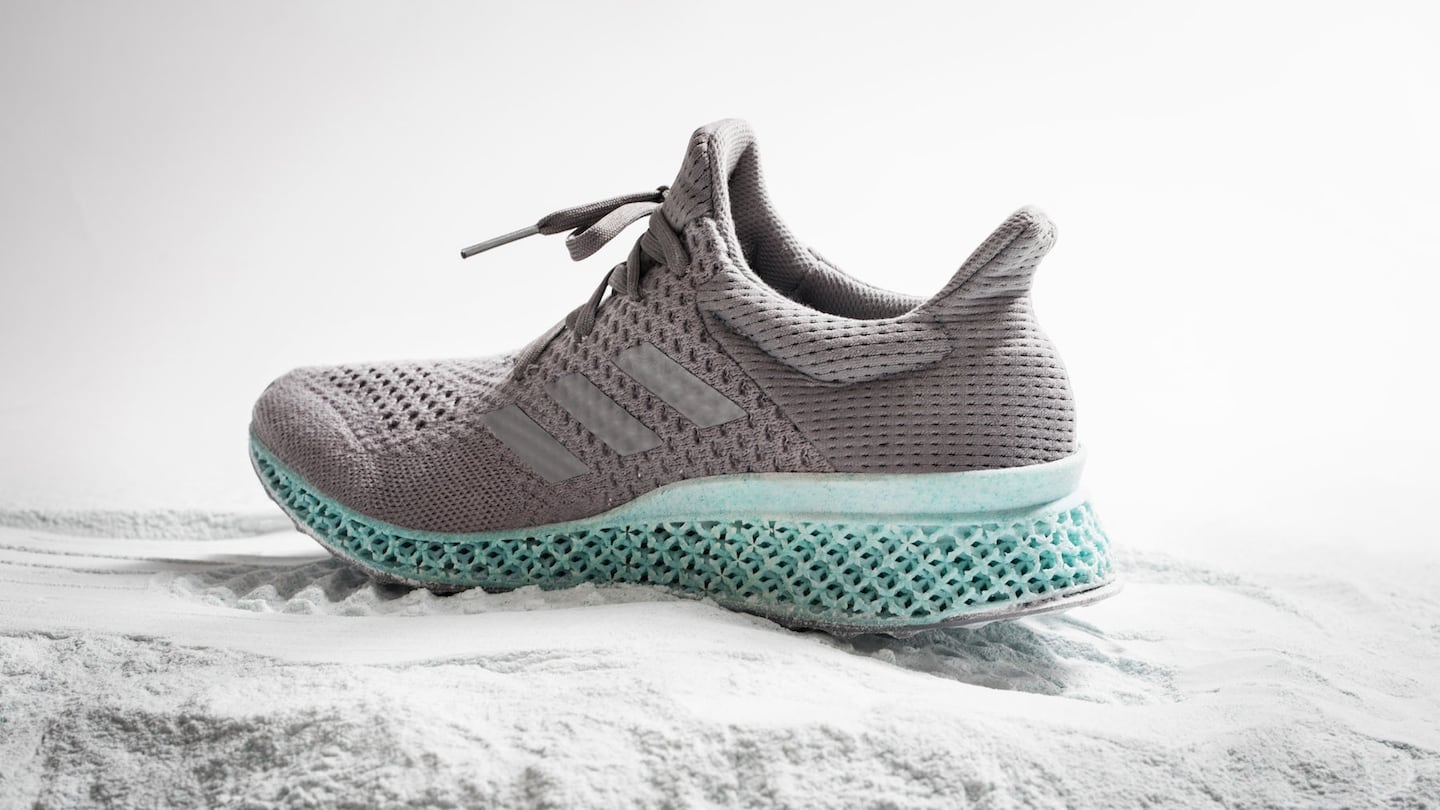
The Business of Fashion
Agenda-setting intelligence, analysis and advice for the global fashion community.

Agenda-setting intelligence, analysis and advice for the global fashion community.

NEW YORK, United States — "No one wakes up in the morning saying, 'I'm going to destroy the oceans.' No one does, but collectively, we put them at risk," says Cyrill Gutsch, founder of Parley for the Oceans, a US-based non-governmental organisation that aims to raise awareness of the planet's critically endangered ocean ecosystems — and what can be done.
To coincide with the COP21 climate summit in Paris, Parley for the Oceans has teamed up with global sportswear giant Adidas to develop an innovative footwear concept called Ocean Plastic. With a 3D-printed midsole, the sneakers are made entirely from materials created using reclaimed ocean waste, such as discarded plastic and illegal gill nets that harm marine life.
“The 3D-printed Ocean Plastic shoe midsole stands for how we can set new industry standards if we start questioning the reason to be of what we create,” says Eric Liedtke, a member of Adidas Group’s executive board. While the shoe is only a prototype, Parley for the Oceans and Adidas hope it will set an example for the industry to rethink their design and manufacturing processes, and help stop ocean plastic pollution. “The industry can’t afford to wait for directions any longer,” he adds.
Each year, around 8 million metric tons of plastic end up in the world’s oceans, according to a study published in the journal Science in February earlier this year, a figure that could increase tenfold in as many years if action isn’t taken. And because petroleum-based plastics are designed to last, the waste won’t break down for decades. “Plastic is a design failure. Once it is produced it never dies,” continues Gutsch. “How can we redesign plastic to make it harmless? How can we turn the problem into an opportunity?”
ADVERTISEMENT
In the context of the fashion industry, a project called Raw for the Oceans illustrates the kinds of solutions that can help. Jointly launched by denim brand G-Star Raw and Bionic Yarn, the eco-friendly label co-founded by Pharrell Williams, with support from Gutsch and Parley for the Oceans, Raw for the Oceans is a collaborative project that collects ocean plastic and turns it into denim. And the fact that the jeans produced through this initiative are environmentally-friendly actually makes the product more appealing, says Gutsch. “It was desirable because it was designed to help save the oceans. There was a sense of exclusivity around it, but it didn’t cost more…That’s when it becomes relevant.”
The fashion industry is in a unique position to address the problem of ocean pollution, says Gutsch. “Fashion is at the crossroads of consumerism and innovation; it is able to communicate messages others can’t address. It’s a strong vehicle of change.” Since its inception, Raw for the Oceans has recovered about 2 million plastic containers from ocean coastlines around the world. “But we need to reach a critical mass to make a real difference. When I first heard that the oceans were about to collapse, I had no idea. Yet, I contributed to it as a consumer.”
Take e-commerce, which has grown rapidly in the past few years. How many people realise that e-commerce is a major source of pollution in fashion? In part, that’s because every single item shipped, even the smallest, must be individually wrapped in plastic.
According to the Environmental Protection Agency, containers and packaging accounted for 30 percent of total solid waste generated in the US in 2012. And this figure is undoubtedly set to rise with growing global e-commerce sales.
In 2014, protective packaging reportedly represented a $22 billion industry, with plastic foam alone valued at $6 billion, as millions of products are constantly revolving around the planet, waiting to be sold online. Not only do they consume fossil fuel, but if the customer sends the item back, the ecological impact doubles.
“Products have become messengers of the era we live in. We can only change something if we establish a new standard, and steer suppliers and manufacturers in the right direction,” says Gutsch, pointing to projects like Adidas new sneakers as examples of this. “It’s in the hands of the creative communities to make a change. It’s not the consumer’s fault.”
In turn, Parley has also launched a new sustainability scheme — A.I.R. (short for avoid, intercept, redesign) — which provides guidelines that any fashion business or consumer can follow, beginning with everyday choices, like avoiding using plastic, intercepting to help manage waste and redesigning and reinventing to explore alternative solutions.
“The only way to move forward, in the future, would be to produce on demand,” says Gutsch, citing 3D printing methods as a sensible alternative. But there are other sustainable solutions: consuming less, creating products that have a longer life expectancy or mimicking nature to develop products that disintegrate.
The industry needs to ditch its reliance on fossil-fuel-based materials like polyester in order to meet climate targets, according to a new report from Textile Exchange.
Cotton linked to environmental and human rights abuses in Brazil is leaking into the supply chains of major fashion brands, a new investigation has found, prompting Zara-owner Inditex to send a scathing rebuke to the industry’s biggest sustainable cotton certifier.
Over the last few years, the run-up to Earth Day has become a marketing frenzy. But a crackdown on greenwashing may be changing the way brands approach their communications strategies.
This week, Sephora announced plans to double down on ‘green’ and ‘clean’ product labels, leaning into an increasingly risky marketing tactic even as a greenwashing crackdown has prompted other brands to pull back.